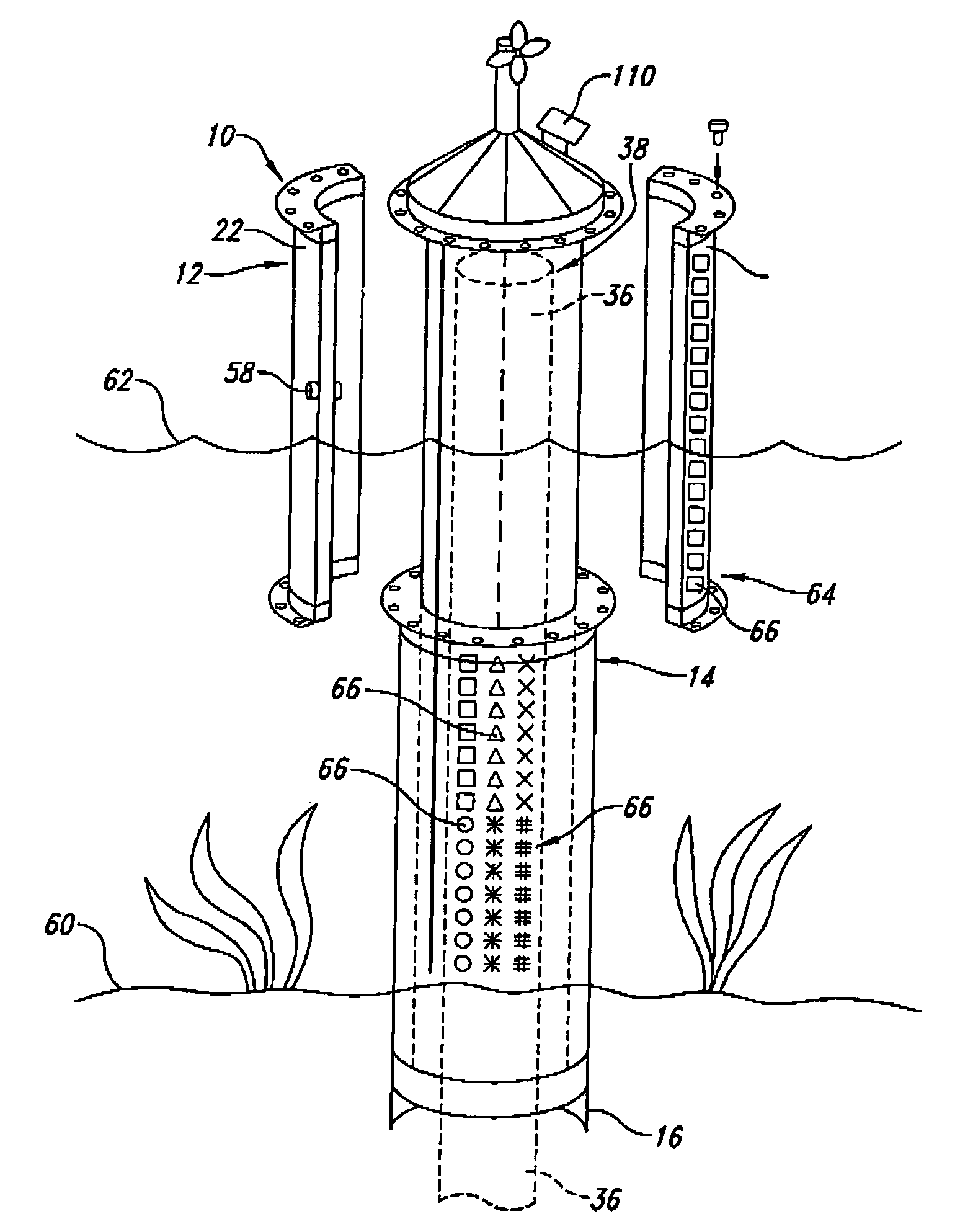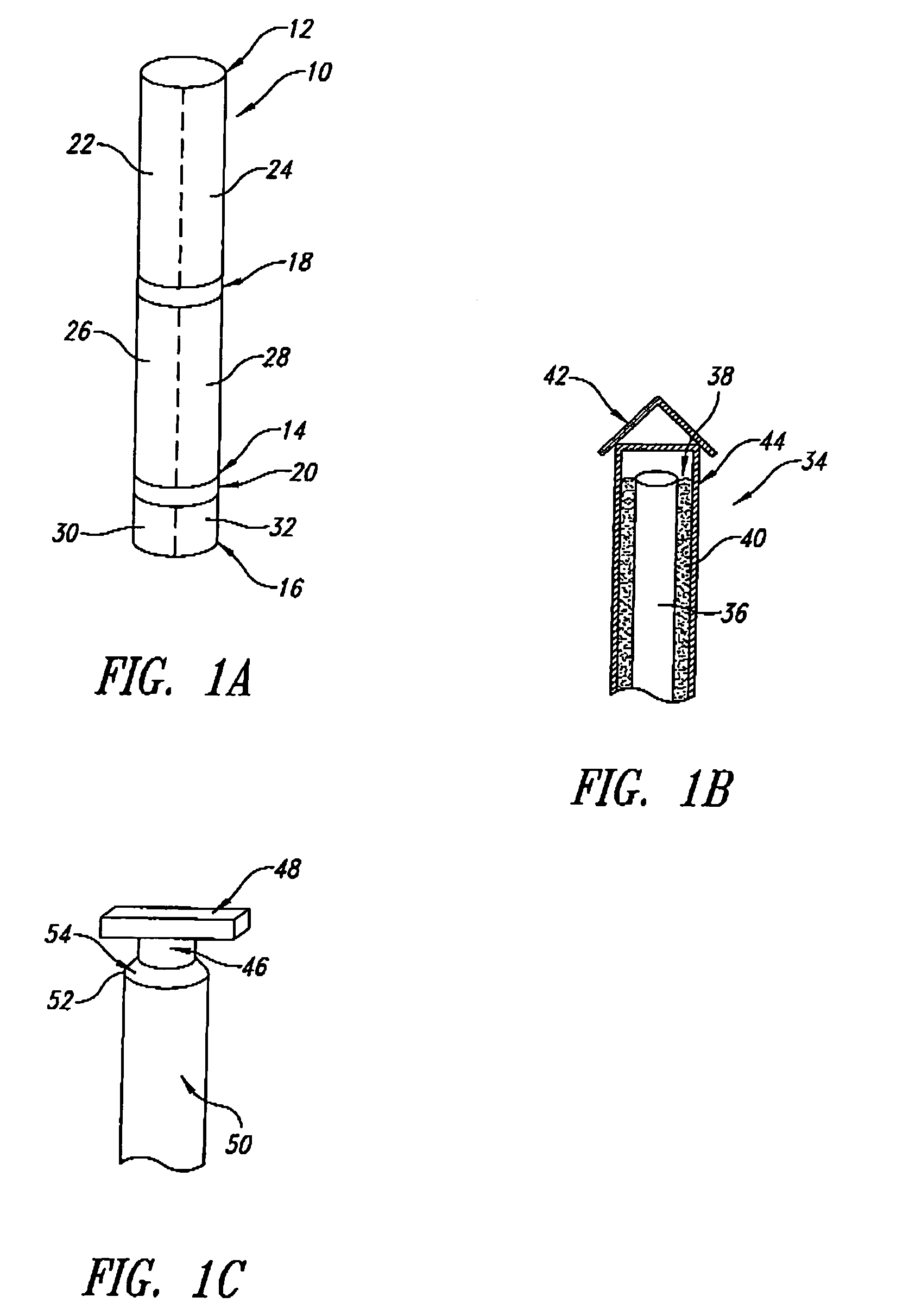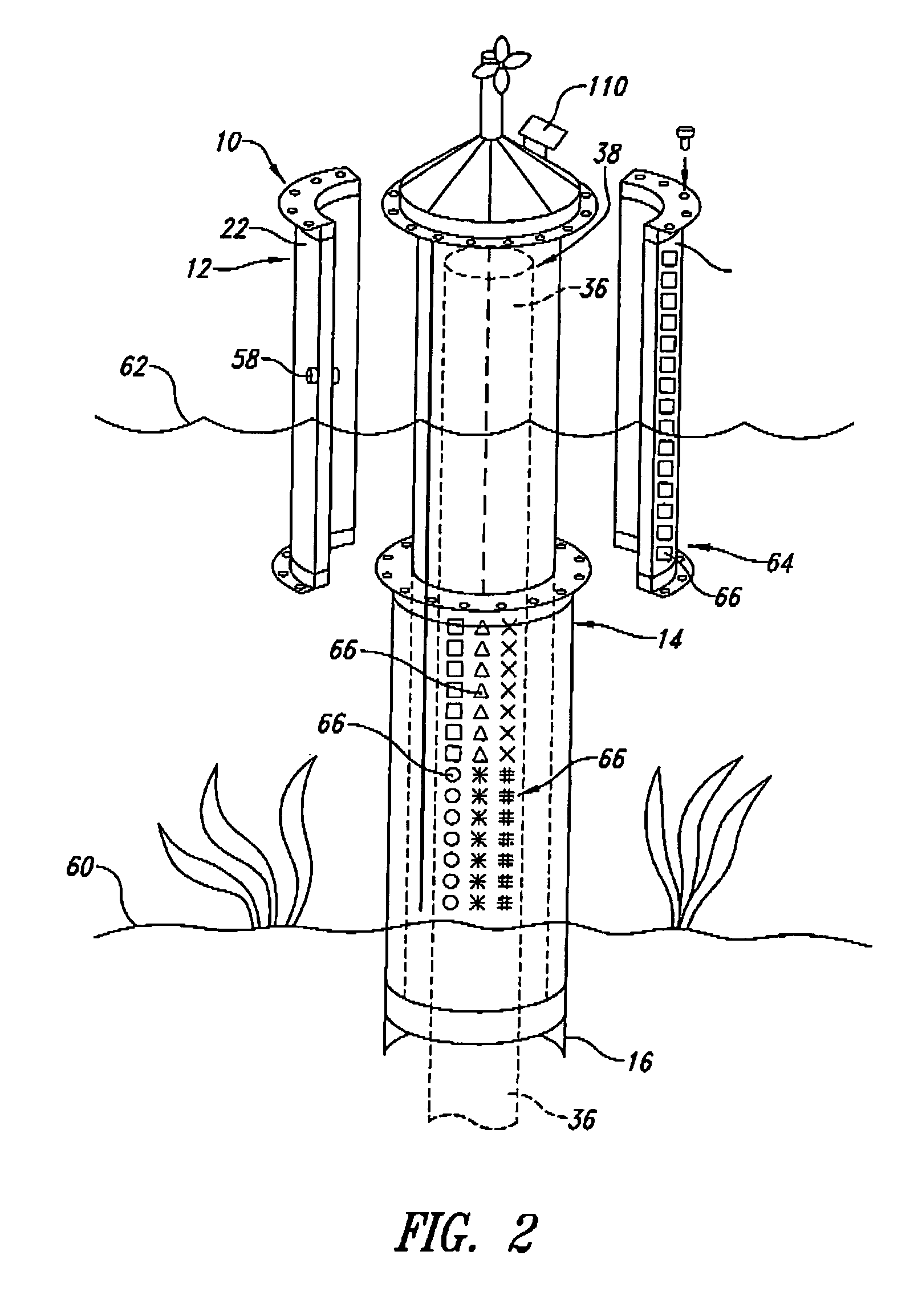Piling decontamination and marine life enhancement system
a technology of marine life and decontamination, applied in pisciculture, aquaria, marine site engineering, etc., can solve the problems of affecting the growth of plants in the nearby vicinity, affecting the health of marine life,
- Summary
- Abstract
- Description
- Claims
- Application Information
AI Technical Summary
Benefits of technology
Problems solved by technology
Method used
Image
Examples
Embodiment Construction
[0030]Referring initially to FIG. 1A, shown therein is a sleeve 10 comprising a top section 12, middle section 14, and a bottom section 16. The top and middle sections, 12, 14 are coupled together at a connector section 18. The middle section 14 is coupled to the bottom section 16 at an inflatable bladder 20. The top section 12 is divided longitudinally into a first top half 22 and second top half 24. Similarly, the middle section 14 is divided longitudinally into a first middle half 26 and second middle half 28, and the bottom section 16 is divided longitudinally into a first bottom half 30 and second bottom half 32.
[0031]The sleeve 10 may be placed over an existing piling as a single unit, as shown in FIG. 1A, or, if the piling is not accessible from the top, each of the top, middle, and bottom sections 12, 14, and 16 can be disassembled into longitudinal first and second top halves 22, 24, first and second middle halves 26, 28, and first and second bottom halves 30, 32, respectiv...
PUM
 Login to view more
Login to view more Abstract
Description
Claims
Application Information
 Login to view more
Login to view more - R&D Engineer
- R&D Manager
- IP Professional
- Industry Leading Data Capabilities
- Powerful AI technology
- Patent DNA Extraction
Browse by: Latest US Patents, China's latest patents, Technical Efficacy Thesaurus, Application Domain, Technology Topic.
© 2024 PatSnap. All rights reserved.Legal|Privacy policy|Modern Slavery Act Transparency Statement|Sitemap



